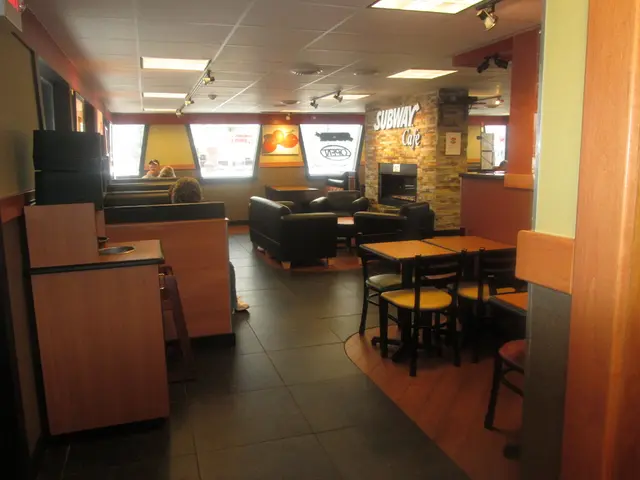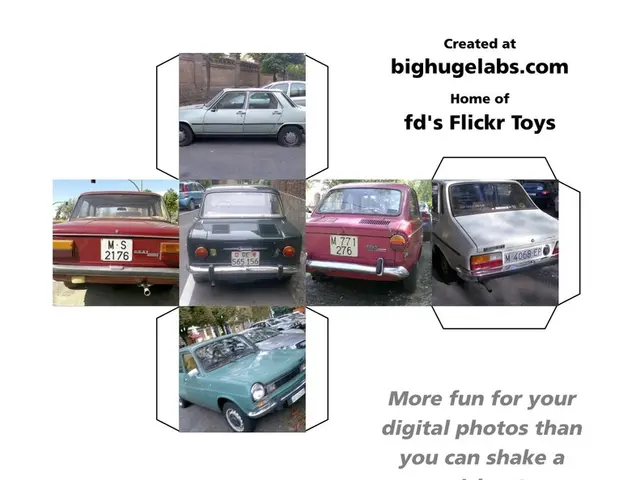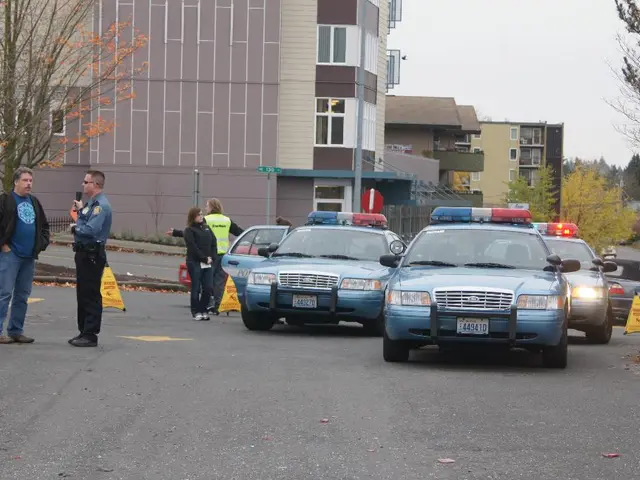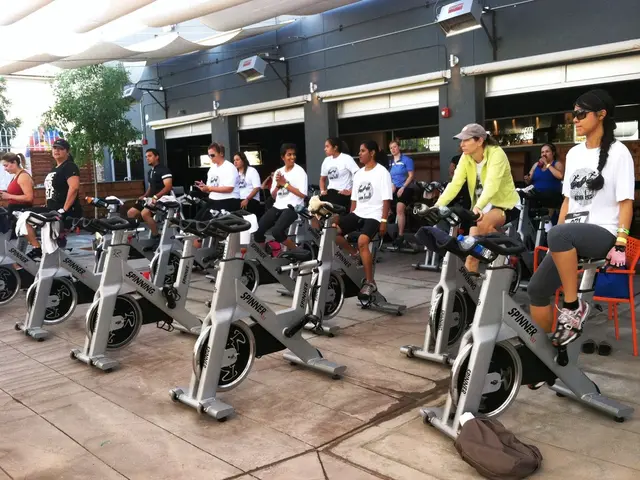The Lethal Cost of Supping Up: How Our Love for Big Cars is Wreaking Havoc on City Life
Larger Vehicles such as SUVs Contribute to Congestion on Roads and Pose a Greater Risk to Safety Compared to Regular Cars
Our streets have never been more clogged and perilous than they are now. Take the Ford F150 truck, for instance. Over the years between 1991 and 2025, it gained 75cm in length, 20cm in height, and a whopping 483 kg in weight. But it's not the only one—this 'supersizing' trend can be seen across the automotive market.
These gargantuan vehicles—particularly SUVs and Light Truck Vehicles (LTVs)—have become fixtures in our everyday lives, climbing to unprecedented popularity. In the US, as many as eight out of the top 10 passenger vehicles sold in 2025 belong to the SUV and LTV category. Meanwhile, in New Zealand, nine of the top 20 sellers in 2024 were SUVs or LTVs, often referred to as 'utes.' Globally, SUVs constituted an astounding 48% of new car sales in 2023—up from a mere 15% in 2010.
With these monstrous machines taking over our roads, one might assume that we're enjoying smoother, safer rides. The reality, however, is far from ideal. These behemoths of the automotive world present numerous dangers to our environment, our wallets, and our well-being.
The environmental consequences are dire. Road transport contributes to a staggering 15% of all global CO emissions, with SUVs and LTVs forming a significant part of this pollution. If listed as a country, the global fleet of SUVs would rank as the world's fifth largest greenhouse gas emitter, surpassing the emissions of Japan and other major economies [BBC, 2023]. To make matters worse, an International Energy Agency report discovered that due to their excessive weight, an SUV or LTV burning petrol or diesel emits a whopping 20% more CO compared to an average medium-sized car, given that CO is the primary culprit behind the warming of our planet [IEA, 2023].
Adding more SUVs and LTVs to the fleet seems like a regressive and reckless move in the face of climate change.
However, even if we transition to electric SUVs and LTVs, we're not entirely in the clear. These vehicles, like all vehicles, generate massive amounts of tire dust as they wear down. Dubbed "tyre emissions," these tiny pieces of rubber and other materials can find their way into our waterways, affecting both human health and the environment as a whole [Journal of Hazardous Materials, 2022].
Beyond their environmental impact, there's more bad news in store for us.
In the past few weeks, two new research papers have shed some unsettling light on the realities of living in a world overrun by SUVs and LTVs. Both studies hail from distinct fields with no shared researchers, yet they share a common conclusion: these vehicles are causing untold harm to urban life.
First, let's tackle traffic congestion.
When Big Gets Bigger: The Ugly Truth about Road Congestion
Traffic in our cities can be a frustrating, never-ending nightmare for many reasons: shrinking public transit budgets, the lack of safe cycling and walking infrastructure, and population growth. A new study published in the journal Transportmetrica A, however, reveals that the proliferation of SUVs and LTVs is making matters significantly worse [Levinson & Gao, 2022].
Transport engineer David Levinson, a Professor from the University of Sydney, and data scientist Dr Yang Gao from City University of Hong Kong analyzed 25 years of traffic data from the Minneapolis-St. Paul freeway network. "The data used in this study is unique because it has been consistently available and well-maintained since the 1990s," says Levinson.
Levinson and Gao focused on truck traffic—essentially the category that includes both SUVs and tractor-trailers. They discovered that, over the study period, SUVs made up a staggering 30.8% of all vehicles on the Twin Cities' freeways, having risen tenfold from their initial 3.65% share in 1995.

The researchers found that traffic congestion worsened significantly over the study period, with network throughput (the maximum number of vehicles that can move through a lane in one hour) dropping from approximately 1,850 vehicles per lane per hour to about 1,600. Remarkably, this decrease occurred despite the increase in the number of cars on the road. However, statistical analysis revealed that the impact of SUVs on traffic flow far outweighed that of smaller cars.
When asked to explain why SUVs contribute to worsened traffic flow, Levinson said, "The physical size of these vehicles leaves less space on the road for others, causing delays as they need more time to brake due to mass and momentum. Additionally, their taller stature influences the behavior of other drivers, who often give SUVs more space, further contributing to traffic congestion."
Next up, a look at the dangerous forces at play when goliath vehicles take to the streets.
The Unseen Menace: How Our Larger-than-Life Cars are Imperiling Lives
SUVs are often marketed as safe and secure, offering drivers and passengers a sense of invincibility. However, the safety picture is far more complex. Yes, SUVs may offer some protection in a head-on collision with a car. But consider other scenarios: SUVs have a higher risk of rolling over than cars, making them more dangerous for all occupants [LSHTM & Imperial College London, 2022]. Their rigid structure results in higher deceleration upon impact, leading to greater risks of injury including concussions and even organ rupture. Furthermore, a growing body of evidence suggests that larger vehicles are associated with riskier driving behaviors [III, 2021].
However, there's little debate about the safety risks SUVs and LTVs pose to pedestrians and cyclists. A recent study by researchers at the London School of Hygiene & Tropical Medicine (LSHTM) and Imperial College London compared the impacts of SUVs and LTVs to those of passenger cars in road traffic collisions. The study found that pedestrians or cyclists struck by an SUV or LTV suffered more severe injuries and faced an increased risk of fatalities [LSHTM & Imperial College London, 2022]. To make this tragic situation even worse, children are particularly vulnerable: a child hit by an SUV is a staggering 82% more likely to be killed than a child struck by a passenger car.
Cities around the world are starting to introduce measures to discourage the use of SUVs and LTVs, such as increased parking fees for heavier cars and bans on advertising high-carbon products, including SUVs. Dublin, Paris, London, and numerous other cities have already implemented or proposed these kinds of measures [Evening Standard, 2023].
The crash study helps bolster the case for these measures, providing evidence that their rationale for discouraging the use of SUVs goes beyond environmental considerations. Meanwhile, Levinson and Gao's study offers cities a compelling reason to resist the onslaught of SUVs, as the research underscores the negative impact of these vehicles on traffic congestion.
The escalating presence of SUVs and LTVs on our roads seems to spell trouble for both our cities and our safety. Perhaps it's time for us to reconsider our infatuation with these larger-than-life vehicles and strive for a more balanced approach to transportation.
Enrichment Insights:
- SUVs and traffic congestion: A study published in Transportmetrica A shows that an increase in the number of large vehicles like SUVs on urban roads worsens traffic congestion for everyone [Levinson & Gao, 2022]. Larger vehicles take up more road space, influence the driving behavior of other drivers, and reduce roadway efficiency [Levinson & Gao, 2022].
- SUVs and road safety: SUVs are associated with more severe injuries to vulnerable road users such as pedestrians and cyclists in crashes compared to passenger cars [LSHTM & Imperial College London, 2022]. Children are particularly vulnerable, with a child struck by an SUV being 82% more likely to be killed than a child struck by a passenger car [LSHTM & Imperial College London, 2022]. Additionally, larger vehicles pose higher risks in multi-vehicle crashes due to their size and weight [LSHTM & Imperial College London, 2022].
- Addressing the issues: Cities could encourage the use of smaller, more fuel-efficient vehicles through measures like congestion pricing, targeted policies focused on vehicle use, and technological solutions such as usage-based insurance pricing [IIHS, 2022]. Stricter emission standards may also help reduce greenhouse gas emissions from vehicles [EPA, 2022].
- Driving behavior: Distracted driving, which is not specific to SUVs and LTVs, also plays a significant role in traffic flow as it leads to unpredictable speed changes and sudden stops, magnifying congestion during peak times [IIHS, 2022].
- The trend of 'supersizing' across the automotive market, as seen in the Ford F150 and other SUVs and Light Truck Vehicles (LTVs), has significantly increased their dimensions and weight over the years.
- The preference for larger vehicles like SUVs and LTVs has notably impacted urban life, with these vehicles becoming increasingly popular, often constituting a significant portion of new car sales.
- The environmental consequences of these gargantuan vehicles are severe, with SUVs and LTVs contributing to a significant portion of global CO emissions from road transport and emitting a whopping 20% more CO compared to medium-sized cars.
- Traffic congestion in cities has worsened due to the proliferation of SUVs and LTVs, with these vehicles taking up more road space and influencing the driving behavior of other drivers, as evident in a study published in Transportmetrica A.
- SUVs and LTVs pose higher risks of rolling over than cars, leading to greater risks of injury, and are associated with riskier driving behaviors.
- Larger vehicles are associated with more severe injuries and increased risks of fatalities to pedestrians and cyclists, especially children, in road traffic collisions.
- To address these issues, cities are introducing measures like increased parking fees for heavier cars and bans on advertising high-carbon products, including SUVs, to discourage the use of these vehicles.
- The escalating presence of SUVs and LTVs on our roads is causing trouble for both our cities and our safety, necessitating a reconsideration of our infatuation with these vehicles and a shift towards a more balanced approach to transportation.









